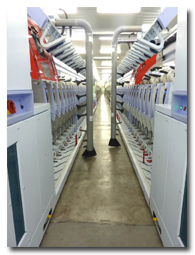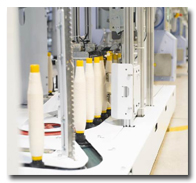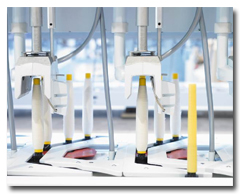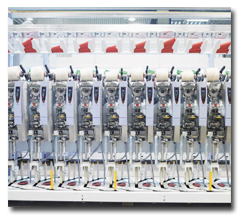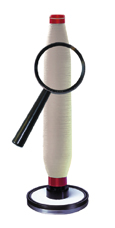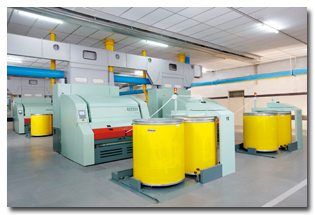TOKYO — May 16, 2011 — Toray Industries, Inc. (Chuo-ku, Tokyo; President & COO: Akihiro
Nikkaku; hereinafter referred to as “Toray”) announced today that it would start selling
MICROMAFIN™, an ultrafine nylon fiber with a delicate feel and superior softness. Toray in April
started shipping the product to major apparel manufacturers, and it aims to achieve a sales volume
of 25 tons in the first year on the market and 100 tons in three years primarily for making
stockings and inner wears.
Toray succeeded in making the single yarn fineness of MICROMAFIN™ much finer than existing
ultrafine nylon fibers. This fineness combined with the inherent flexibility of nylon gives
MICROMAFIN™ its excellent texture.
MICROMAFIN™ is a new original yarn developed under the concept of “unforgettable fabric feel
that makes you want to keep touching” and it sets itself apart from ordinary ultrafine nylon fiber
by its delicate, fine and smooth feel. Its softness and drape characteristic produces a graceful
and elegant texture as well as appearance, making it best suited for delicate products such as
lingerie.
When used in textured yarn, MICROMAFIN™’s improved single yarn fineness enables precise cloth
structure. It can also be used to develop thin and warm products as the fiber contains abundant
layers of air within.
Toray developed and introduced an innovative facility, which enabled the production of
MICROMAFIN™, an ultrafine nylon fiber that boasts the world’s best single yarn fineness of 0.5
dtex*2. A wide range of products using ultrafine nylon fiber with single yarn fineness of 1.0 dtex,
called high-multi yarn, have been in the market for quite some time now. However, production and
commercialization of nylon fiber with single yarn fineness below 1.0 dtex had been difficult, as it
is harder to maintain the consistency along the fiber’s length during production than polyester, in
addition to it being prone to thermal degradation in the polymer melting process. Toray, in
pursuing the ultimate yarn-making technology, succeeded in significantly improving the consistency
along the fiber’s length and in reducing the thermal degradation of polymer to the minimum, thus
enabling mass production of stable ultrafine nylon fiber.
Under its long-term corporate vision “AP-Growth TORAY 2020,” Toray has identified the fibers
and textiles business as one of its foundation businesses. The company intends to pursue the
development of high value-added special yarns and continue to provide stable supply and offer
products that meet the customer requirements.
Details of MICROMAFIN™ are as follows:
1. Product name: MICROMAFIN™
2. Features
(1) The ultrafine nylon fibers with single yarn fineness
in the 0.5 dtex class give the fabric a delicate feel and smooth texture. It is highly soft with
superior draping properties.
(2) When used as finished yarn, its dense fabric
structure gives it high thermal properties.
3. Technical details
(1) Original yarn design
Compared to polyester, it had been harder to improve nylon fibers’ single yarn fineness.
Toray succeeded in designing original yarn with the industry-best 0.5 dtex class single yarn
fineness, achieving excellent texture along with the delicacy inherent in nylon. MICROMAFIN™ is
available in two types, Nylon 6 and Nylon 66, and its fineness and filament count can be set
according the requirement.
(2) Spinning technology
By newly developing and introducing an innovative manufacturing facility, Toray succeeded in
achieving high consistency along the fiber’s length at industry-best single yarn fineness of 0.5
dtex class. Further, by reducing the thermal degradation of polymer to the minimum, Toray achieved
stable production of this ultrafine nylon fiber.
4. Patents
Toray has submitted five MICROMAFIN™-related patent applications.
5. Sales plan
(1) Started sales in April 2011
(2) Sales targets: 25 tons in the first year (fiscal year
2011)
100 tons in the third year (fiscal year 2013)
<Terms>
(Note 1) Single yarn fineness
It denotes the thickness of the monofilament that forms the multifilament. Fineness is the
ratio of mass along the fiber’s length.
(Note 2) Dtex (decitex)
One dtex is the thickness of a 10,000m long fiber weighing 1g.
Posted on May 27, 2011
Source: Toray Industries Inc.

